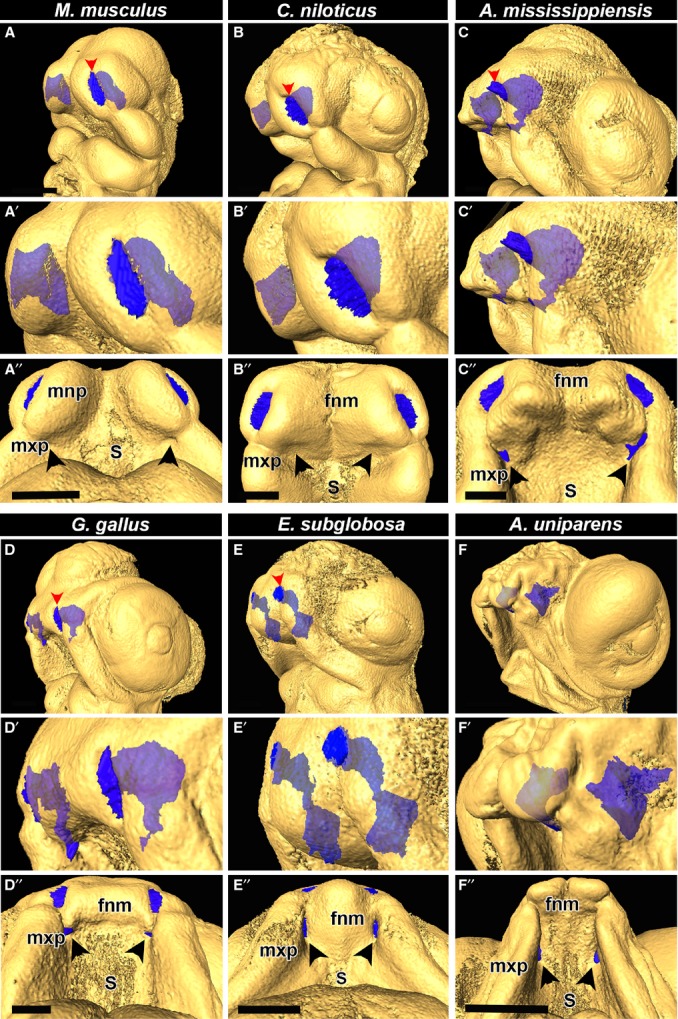Fig 4.

Endocasts of nasal cavities illustrate variation in choana formation between mammals as well as all major reptilian lineages, including birds. Rotational views of nasal cavities in E11.5 mouse (Mus musculus), ∼ 10-day crocodile (Crocodilus niloticus), stage 12 alligator (Alligator mississippiensis), stage 28 chicken (Gallus gallus), stage 4 turtle (Emydura subglobosa) and stage 12 whiptail lizard (A-F). Endocasts of nasal cavities in mouse and young crocodile, alligator, chicken and turtle show the nasal cavities open to the external nares (darker blue colour, red arrowheads, A,A′,B,B′,C,C′,D,D′,E,E′). The external nares in the lizard is fused (as shown in Fig.2) and does not open until later in development (F-F′). In the mouse and crocodile there is a blind sac in the posterior of the nasal cavity (A′,A″,B′,B″). In the older alligator, chicken turtle and lizard, the nasal cavities have connected with the oral cavity, indicating an open choana (C, C′,D′,D″,E′,D″,F′,F″). Key: fnm, frontonasal mass; mnp, medial nasal prominence, mxp, maxillary prominence; s, stomodeum. Scale bars: 500 μm.
